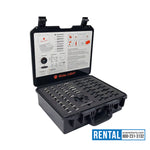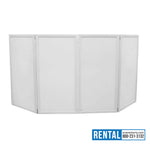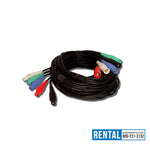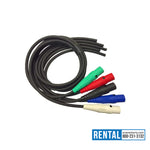You have no items in your shopping cart.
A Look at the Use of CO2 Special Effects for Live Performances
Seeing cold fog shoot above the crowd after the final notes of a concert or a loopy DJ track is always so thrilling. These puffs of CO2 clouds or CO2 jets, are common at live events and are commonly coupled with music, lights or fireworks to make the show all the more special.
However, what is needed to achieve these special effects? Although CO2 jets look straightforward, they are exciting because of how chemistry, physics and exact engineering are mixed. In this blog post, we’ll cover the details of CO2 effects, explain their functions, look at the devices needed and discover how live events are enhanced by using them.
If you desire to know the secrets behind stage fog or you’re an event planner or technician, this guide has all you need.
What Are CO2 Special Effects?
CO2 jets, or cryo jets, use carbon dioxide in its liquid form to produce plumes of cold fog that dissipate quickly into the air. Unlike traditional fog machines that rely on heated fluid, CO2 jets operate without heat, which gives them their signature blast-like appearance and rapid dissipation.
These effects are widely used across live concerts, nightclubs, sports arenas, music festivals, and theatrical productions. They are considered a safe, non-flammable, and crowd-friendly method to add energy and drama to a show.
When executed properly, Special Effects like CO2 bursts can highlight key moments in a performance, provide visual rhythm, and create excitement that elevates the entire audience experience.
The Science of CO2: How It Works
The foundation of CO2 jets lies in basic thermodynamics and phase transition.
Phase Change: Liquid to Gas
Carbon dioxide is kept safe in steel tanks at a high pressure, where it remains a liquid. It rapidly grows in size as soon as it is released and becomes a gas. The huge release of heat during the change absorbs a lot of warmth from the air, making the temperature plunge sharply.
The quick drop in temperature makes water vapor in the air change to small ice crystals which are white. This causes a huge stream of fog to rise far into the atmosphere.
Key Scientific Concepts:
-
Latent heat of vaporization: The energy required to convert liquid CO2 into gas
-
Adiabatic cooling: The sudden expansion of gas reduces temperature
-
Condensation: Water vapor in the air condenses into fog due to low temperatures
Because CO2 gas is heavier than air, the fog falls quickly and does not linger—making it ideal for use in fast-paced environments like concerts where visibility and timing are critical.
CO2 Equipment Overview
While the effect might seem straightforward, the equipment behind CO2 jets is highly specialized. Here’s what goes into a standard CO2 effect setup:
1. CO2 Tanks
High-pressure cylinders store liquid CO2 at around 800-900 PSI (pounds per square inch). These are typically 20, 35, or 50-pound tanks and must be certified for safety.
-
Tanks should be upright during use
-
Must be secured to prevent tipping
-
Require proper handling and transport precautions
2. CO2 Jet Machines
These are the nozzles or launchers that convert high-pressure liquid CO2 into the dramatic fog burst. They are often installed on the stage floor, truss structures, or handheld units for performers.
Types of CO2 jet machines:
-
Fixed jet systems: Mounted and DMX-controlled
-
Handheld cryo guns: Used by performers or DJs
-
Moving head CO2 jets: Allow directional control and movement
3. Hoses and Regulators
Industrial-grade hoses rated for high pressure connect the tanks to the jet nozzles. Regulators ensure the flow of CO2 is stable and safe.
-
Must be leak-checked before every use
-
Length and flexibility vary based on stage layout
-
Quick-connect fittings help speed up setup and teardown
4. Control Interface
Most CO2 jet systems can be integrated with DMX (Digital Multiplex) lighting consoles or special effect controllers for precise timing and synchronization with music and lighting.
Some setups even include timecode integration for large-scale productions where milliseconds matter.
Safety Considerations
Despite their visual appeal, CO2 systems require careful safety protocols due to the nature of compressed gas and rapid cooling.
Oxygen Displacement
CO2 displaces oxygen, so high concentrations in enclosed spaces can pose a suffocation risk. Venues must be well-ventilated, and CO2 systems should not be used continuously or near performers’ faces.
Frostbite Risk
The gas exits the nozzles at temperatures as low as -70°C (-94°F). Direct contact can cause frostbite or injury. Operators and performers should avoid touching nozzles during or after discharge.
Noise and Pressure
CO2 jets can produce a loud whooshing noise, which adds excitement but may require hearing protection in some environments. The force of the jet may also impact nearby props or loose stage elements.
Equipment Handling
-
Always wear gloves when handling tanks
-
Use pressure-rated hoses and check for leaks
-
Secure tanks properly during operation
Applications of CO2 Special Effects
CO2 is one of the most versatile and cost-effective Special Effects tools in live entertainment. Here's how it’s typically used:
Concerts and Music Festivals
CO2 jets are synchronized with music drops, beat drops, or chorus hits to visually emphasize climactic moments. They’re often placed at the front of the stage, trusses, or even handheld by performers.
DJ Performances and Clubs
In nightclubs and DJ shows, cryo effects are used to hype the crowd and lower ambient temperatures on the dance floor. The cold fog offers both spectacle and function.
Sports and Arena Events
CO2 is frequently used during player introductions, halftime shows, or big wins. The quick-dissipating fog doesn’t interfere with visibility or require cleanup.
Corporate and Theatrical Shows
Product launches, corporate events, and stage productions use CO2 to enhance scene changes or create dramatic entrances. Because the fog disappears quickly, it’s less disruptive than traditional smoke or haze machines.
CO2 vs. Traditional Fog and Haze
Here’s how CO2 jets differ from other common atmospheric effects:
| Feature | CO2 Special Effects | Fog Machines | Haze Machines |
|---|---|---|---|
| Visibility | High-impact burst | Moderate | Subtle, ambient |
| Duration | 2-5 seconds | 30+ seconds | Continuous |
| Residue | None | Possible (with fluid) | Minimal |
| Dissipation Speed | Immediate | Slow | Very slow |
| Temperature | Very cold (-70°C) | Warm/hot | Neutral |
| Crowd Interaction | Safe at distance | May obstruct vision | Mostly background |
If the goal is to add drama, intensity, and short bursts of visual excitement, CO2 is the superior option.
Environmental and Legal Considerations
Unlike pyrotechnics, CO2 jets are not classified as explosives and usually don’t require special permits. However, it's still essential to comply with local regulations and safety guidelines.
Environmental Impact
CO2 used in special effects is typically recaptured as a byproduct from other industrial processes, meaning it doesn't contribute directly to additional carbon emissions. Still, frequent or large-scale use should be balanced with broader sustainability efforts.
Venue Compliance
Always verify with venue managers and local authorities whether CO2 is allowed. Some indoor locations may have strict guidelines about compressed gas use.
Tips for Successful CO2 Integration
Want to get the most out of your CO2 setup? Here are some practical tips:
-
Test in advance: Always do a full-system test before showtime
-
Check wind conditions: For outdoor events, wind can quickly disperse CO2 fog
-
Use in moderation: Less is more—save it for high-impact moments
-
Coordinate with lighting: Combine CO2 jets with strobes or color blasts for added drama
-
Monitor tank pressure: Make sure tanks are full and regulators are calibrated
CO2 Innovations on the Horizon
Technology is continuously evolving in the world of Special Effects, and CO2 systems are no exception. Some recent innovations include:
-
Moving head CO2 jets: Allow effects to be directed like intelligent lights
-
Wireless control systems: Enable real-time control without cables
-
RGB LED-integrated nozzles: Combine fog and color for even more visual impact
-
Battery-powered CO2 units: Ideal for temporary installations or mobile performers
As demand for immersive experiences continues to grow, CO2 technology is being pushed to new creative heights.
Conclusion
Creating CO2 special effects is more complicated than simply adding fancy touches. It requires attention to science, safety and how the effect is presented. From the rapid release of gas to the strong pressure used in each explosion, these results are based on physics that provide huge visual results.
In any case, whether producing a concert, planning a festival or designing a theatrical show, you can use the CO2 science to make your production more creative and successful. Because of how fast they burn, hownoticeable the flame is and their safety, pyrotechnics are widely used in the live event industry by professionals.
To explore CO2 effect rentals and full-service event production support, visit EventStarts.com your trusted partner for live event innovation.






